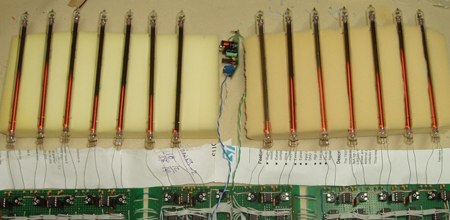
Reader [Bradley] sent in his ArduiNIX project, an Arduino shield designed for driving nixie tubes. The shield allows the Arduino to drive and multiplex nixie tubes without any additional hardware. These antique-looking displays are commonly hacked into clocks. It takes 9 volts from a wall wart and steps it up to over 200V in order to drive the displays. The shield is capable of multiplexing up to 80 individual elements. He has example code for driving a 6-digit display and a clock on his site. He is selling kits and completed shields too.
Related: Victorian nixie tube clock
[thanks Bradley!]











